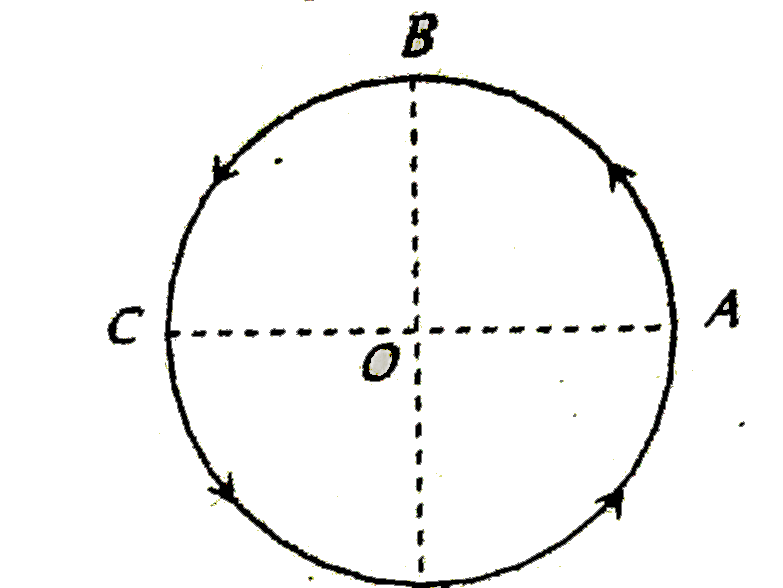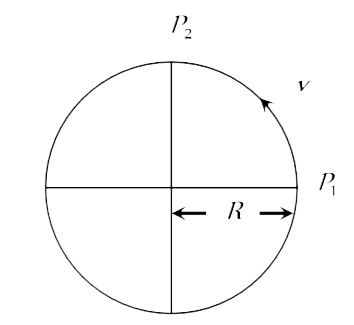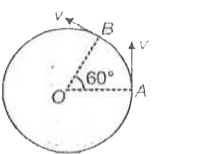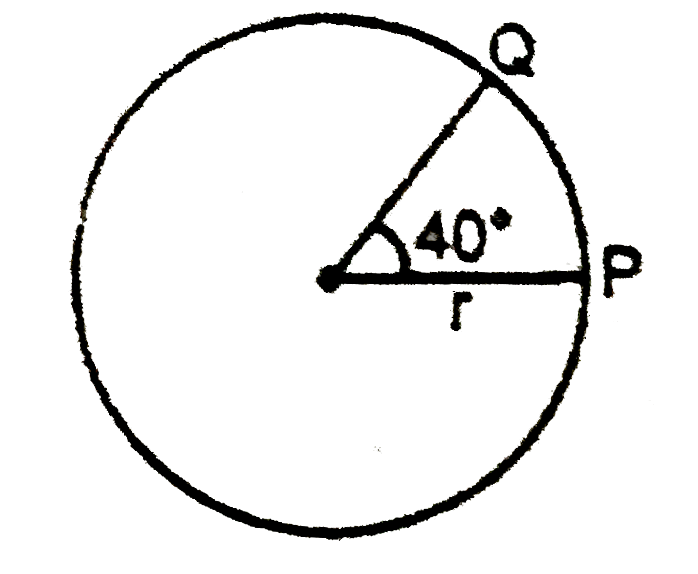Figure shows a body of mass m moving with a uniform speed v along a circle of radius r . The change in velocity in going from A to B is

v√2
v/sqrt2
v
zero
Step by step video & image solution for Figure shows a body of mass m moving with a uniform speed v along a circle of radius r . The change in velocity in going from A to B is by Physics experts to help you in doubts & scoring excellent marks in Class 11 exams.
Updated on:21/07/2023Topper's Solved these Questions
Similar Questions
Knowledge Check
Figure below shows a body of mass M moving with the uniform speed on a circular path of radius, R. What is the change in acceleration in going from P1 to P2
 AZeroBv2/2RC2v2/RDv2R×√2
AZeroBv2/2RC2v2/RDv2R×√2The acceleration of an object moving with speed v in a circle of radius r is
Au2r towards the centreBur way from the centreCur2 way from the centreDru2 towards the centreIf a body is moving with a uniform speed v in a circle of radius 'r', then the angular acceleration of the body will be
Av/rBv2r along the radius and away from the centreCv2r along radius and toward centreDzero
Centripetal force (F) on a body of mass (m) moving with uniform speed (v) in a circle of radius (r ) depends upon m, v and r. The formula for the centripetal force using theory of dimensons.
View SolutionA particle is moving with uniform speed 0.5m/s along a circle of radius 1m then the angular velocity of particle is (in rads−1)
View SolutionA particle is moving in a circle of radius r having centre at O with a constant speed v . The magnitude of change in velocity in moving from A to B is

View SolutionA particle is moving at uniform speed 2ms−1 along a circle of radius 0.5m.The centripetal acceleration of particle is
View SolutionA particle is moving in a circle of radius r with speed v as shown in the figure. The magnitude of change in velocity in moving from P to Q is

View Solution
